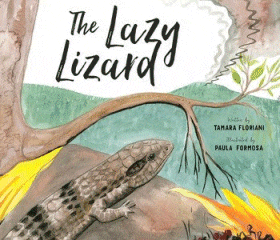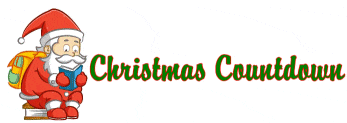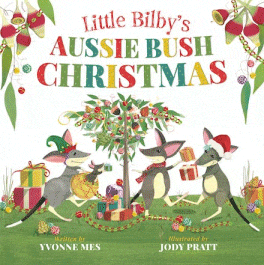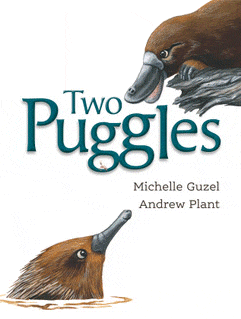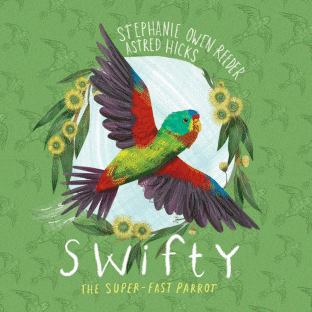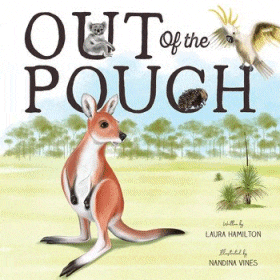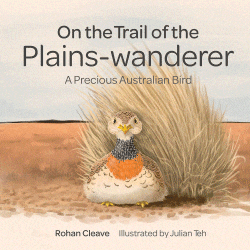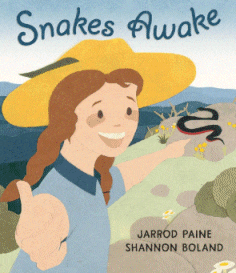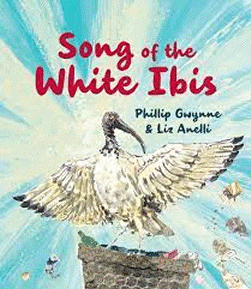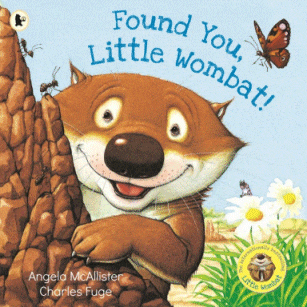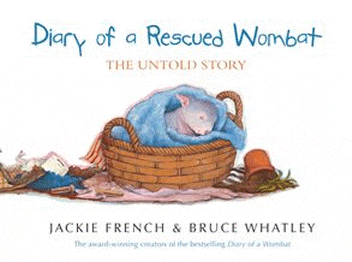
Diary of a Rescued Wombat
Diary of a Rescued Wombat – The Untold Story
Jackie French
Bruce Whatley
HarperCollins, 2022
32pp., hbk., RRP $A24.99
9781460761823
Twenty years ago, a baby wombat was rescued from its burrow in southern New South Wales and began a story that not only continues today through the adventures of her granddaughter Wild Whiskers posted on Jackie’s FB page, but which brought a whole new dimension to the stories published for preschoolers at the time. For despite Diary of a Wombat being simple one-word captions accompanying Bruce Whatley’s adorable illustrations, those words told a story, endeared the character to the readers and left them wanting more. And despite being simple one-word captions accompanying Bruce Whatley’s adorable illustrations, that book was loved by all ages and went on to win the Young Australian Readers’ Award (along with a host of others) for that year, an award for which I was co-coordinator but which was entirely decided by the reviews and votes of children throughout Australia.
Since then, as well as being made into a stage presentation and having a commemorative coin minted to celebrate the 20th anniversary of its publication, Diary of a Wombat is now a must-have staple in the collection of any new-born baby, as familiar and as loved as Grandma Hush and Poss, Snugglepot and Cuddlepie and a small handful of others who have survived the test of generations.
But what led Mothball to become such a part of Jackie French’s family and for her descendants to be as loved as she is?
In this new book, Jackie and Bruce take the reader back to where it all began, to where little Mothball was initially rescued and how she developed a love of carrots (but not so much for toilet paper) and how she learned she could train the humans she lived with to do her bidding. In a world full of prequels and sequels, in my opinion, this is one of the best prequels ever!!! And not just because it is charming and engaging and brings back so many memories including the beginning of a long-standing personal friendship with the author, but because of the joy and wonder and awareness that it is going to bring to another generation of children as the wombat is cited as being the most endearing of Australia’s indigenous creatures by so many.
In her book The Fire Wombat , Jackie tells of the impact that the fires that ravaged the landscape three years ago had on the wildlife; but now our country has been devastated by floods and many wombat burrows and other habitats are under threat again. How many other little Mothballs are there that now need our help, our care and our support? By telling the original story in this way, so that both books go hand in hand, a new generation of readers is going to feel a similar connection to these creatures and thus ensure their safety and survival.
The memory of Miss 6 sitting up in bed beside Miss 2 and reading Diary of a Wombat to her, one of the first she had ever read independently and was so determined to share with her little sister, is one of my most precious. So my review copy is going to be in a special Santa Sack this Christmas, even though the girls are now 16 and 12, and it will be as warmly welcomed there as it will be by any other little (or big) reader who is given it.
